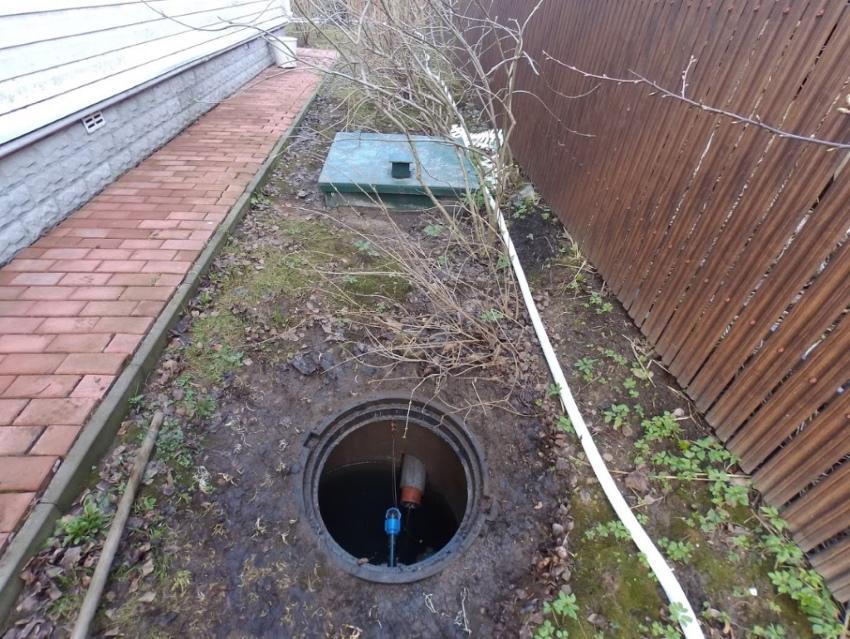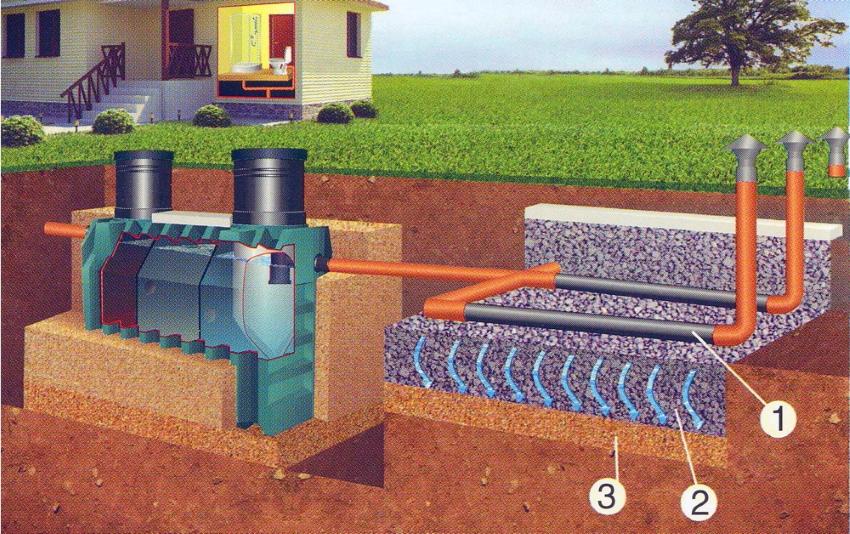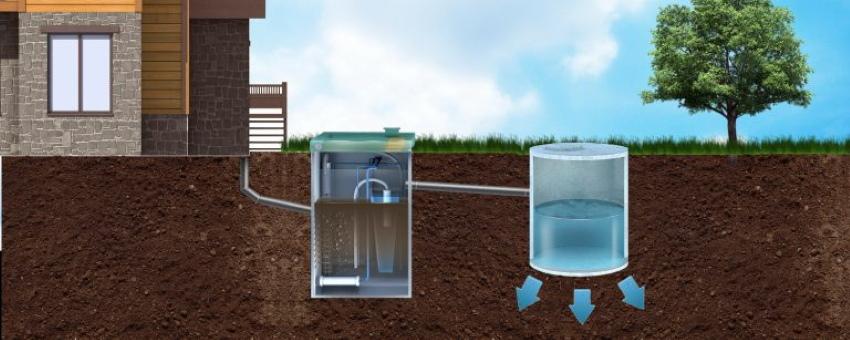Where can you drain the water from the septic tank - we make the right choice based on the characteristics of the soil
 If there is a private sewage system in the near future, you will be faced with the question of where you can drain the water from the septic tank. The presence of a local treatment plant at the site does not yet solve the problem of disposal of wastewater. If the house (in the sense of the sewer) is rarely used, you can periodically call a special sewer truck. It will pump out the accumulated water and take it out, but with intensive use it is quite expensive. This is where special systems and structures come in handy, which will make it possible to do without calling specialists during operation.
If there is a private sewage system in the near future, you will be faced with the question of where you can drain the water from the septic tank. The presence of a local treatment plant at the site does not yet solve the problem of disposal of wastewater. If the house (in the sense of the sewer) is rarely used, you can periodically call a special sewer truck. It will pump out the accumulated water and take it out, but with intensive use it is quite expensive. This is where special systems and structures come in handy, which will make it possible to do without calling specialists during operation.
The septic tank itself is not the final link in waste disposal. In it, the liquid component only undergoes mechanical anaerobic purification. After it, it is imperative to cleanse the water in order to bring it to the surface. It has a persistent, characteristic sewers, an unpleasant smell, in addition, the withdrawal of such untreated effluents is prohibited by law.
There are several options, and which one is right for your site depends on two factors. These are the composition of the soil and the level of occurrence of groundwater.
Where can you drain water from a septic tank on filter soils
Filter soils are considered to be the soil that can quickly absorb water: sandstones and sandstones. Provided that the groundwater is low (less than 1.5 m), two types of structures for additional treatment and drainage are allowed on such land:
- Filtering field. Perforated pipes are connected to the septic tank, laid in a trench on a cushion of rubble. The effluent seeps through the holes and passes through the bed, which acts as an additional filter. Then they are absorbed into the soil.

- Filter well. Instead of many pipes, there is only one, connected to a free-standing additional well. It has walls, but no bottom, instead of a rubble pillow. The principle of operation is similar to the filtration field: the effluent is cleaned in crushed stone and goes into the soil under the bedding. Previously, such wells were laid out of concrete rings. Now they can be bought ready-made in the form of cone-shaped plastic containers without a bottom.

If the groundwater level is more than 1.5, moreover, the soil is heavy, clayey, the structures described above cannot be installed. They just won't work.
Wastewater discharge options for problematic dense soil
For clay, more advanced systems are used that additionally clean the wastewater. They are also effective at deep groundwater levels, since they replace the filtering soil. In this case, you can drain water in one of the ways by setting:
- Septic tank with biofilter. Water from the septic tank enters the second accumulator, inside which there is peat. Having passed through it, the treated wastewater goes out through a pipe at the bottom of the filter and is discharged into a ditch.

- Biological treatment station. Recommended for clayey soil with high groundwater table. It cleans drains up to 100%. This makes it possible even to drain them into water bodies, although ditches or wells are more often used.
